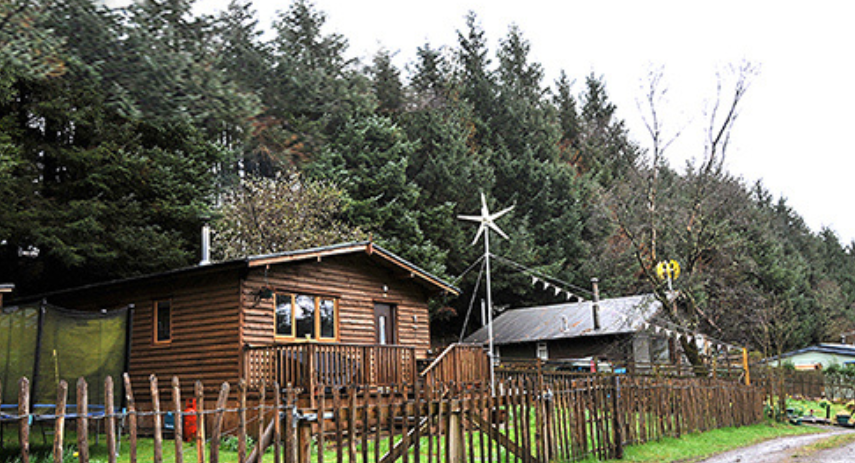
Carbeth Hutters Community Company
lease/licence, inclusive board membership
The Carbeth Hutters Community Company is a membership organisation which owns 150 acres of land North of Glasgow. Hutters own their own huts but are required to lease the land from the company, and they automatically become members of the company.
Background
Hutting at Carbeth has a long history, dating back to 1918 and offering families living along the industrial banks of the River Clyde opportunities to get fresh air and respite in the countryside. Huts are small simple wooden structures, often off-grid and made with recycled materials. Interest in hutting fell between the 1970s and 1990s but the people that were left at Carbeth often had longstanding family connections to the land. When the former landowner wanted to develop the land and get rid of the huts, the hutters put up a fight, resisting eviction. When the landowner then tried to double annual rents, the hutters united in a rent strike which lasted for 7.5 years. At this point, the landowner recognised that it was best to sell the land. The hutters set up a company that was able to secure a 25-year loan to purchase 98 acres of land. Ownership has since then increased to 150 acres, with 177 huts spread out across different plots.
“We had lots of people like trade union activists, people who were used to organising and who were not going to give up without a fight.” – Alan Graham, Committee member.
Governance
The Carbeth Hutters Community Company is a company limited by guarantee. The company is a membership-based organisation and every hutter at Carbeth is a member of the company. Hutters own their hut, but they lease the land from the company. New hutters are required to sign a lease and become members of the company. Revenues from land rent are used to cover repayment of the loan and interest, and for daily maintenance costs.
The Carbeth Hutters Community Company is led by a board, known as the Committee, which members are elected through the Annual General Meeting (AGM). The Committee keeps the hutters informed through newsletters that are sent out at least twice a month. On key decisions, such as the purchase or sale of land, the membership has to be consulted directly. For example, in 2017, the company was looking to purchase an additional 50 acres of land to create better connections between plots, which required a new loan. They held an Extraordinary General Meeting (EGM) to discuss the plans with members, whilst the process of drafting a business plan, by an external consultant, also involved public meetings, open surgeries and an online survey. More recently, a decision to spend significant funds on improvements to one of the main tracks through the estate was made on the back of a members’ petition. Where agreement cannot be reached, decisions are put to a majority vote.
The unique set-up at Carbeth has been made possible by creative use of legal frameworks. The hutters were able to persuade Stirling Council to designate the area as a conservation area, which underpinned the landlord’s decision to sell but also means that the area cannot be expanded with new huts. With a view to preserve Carbeth as a traditional hutting site, new hutters are required to subscribe to the strong ethos of the company to safeguard and protect Carbeth for future generations. Huts cannot be sublet or rented out as holiday homes. Initially, any sale of huts was envisaged to go through the board, which maintained a waiting list of aspiring hutters, however, this has been difficult to enforce and nowadays the board plays more of an informational role.
“People keep the huts for their own benefit but there is a bigger picture aim, which is securing Carbeth for the future. For our families, but also allowing new people to come in. We want to preserve what is there”. – Alan Graham, Committee member.
Public and community value
To this day, Carbeth still provides opportunities for people, including children, from nearby Clydebank and Glasgow to access the outdoors and become of a community away from home. West Dunbartonshire charity ‘Y Sort It’, which is dedicated to activities for young people between the ages of 8 and 25 years, also owns its own hut at Carbeth that is used for trips and family fun days. Wider engagement with the local community happens through open activities, a craft club and public access for walkers and cyclists to the West Highland Way and the John Muir Trail that run through the hutting site.
Sources:
- https://www.carbethhutters.co.uk/
- Interview Alan Graham, Committee Member of Carbeth Hutters Community Company